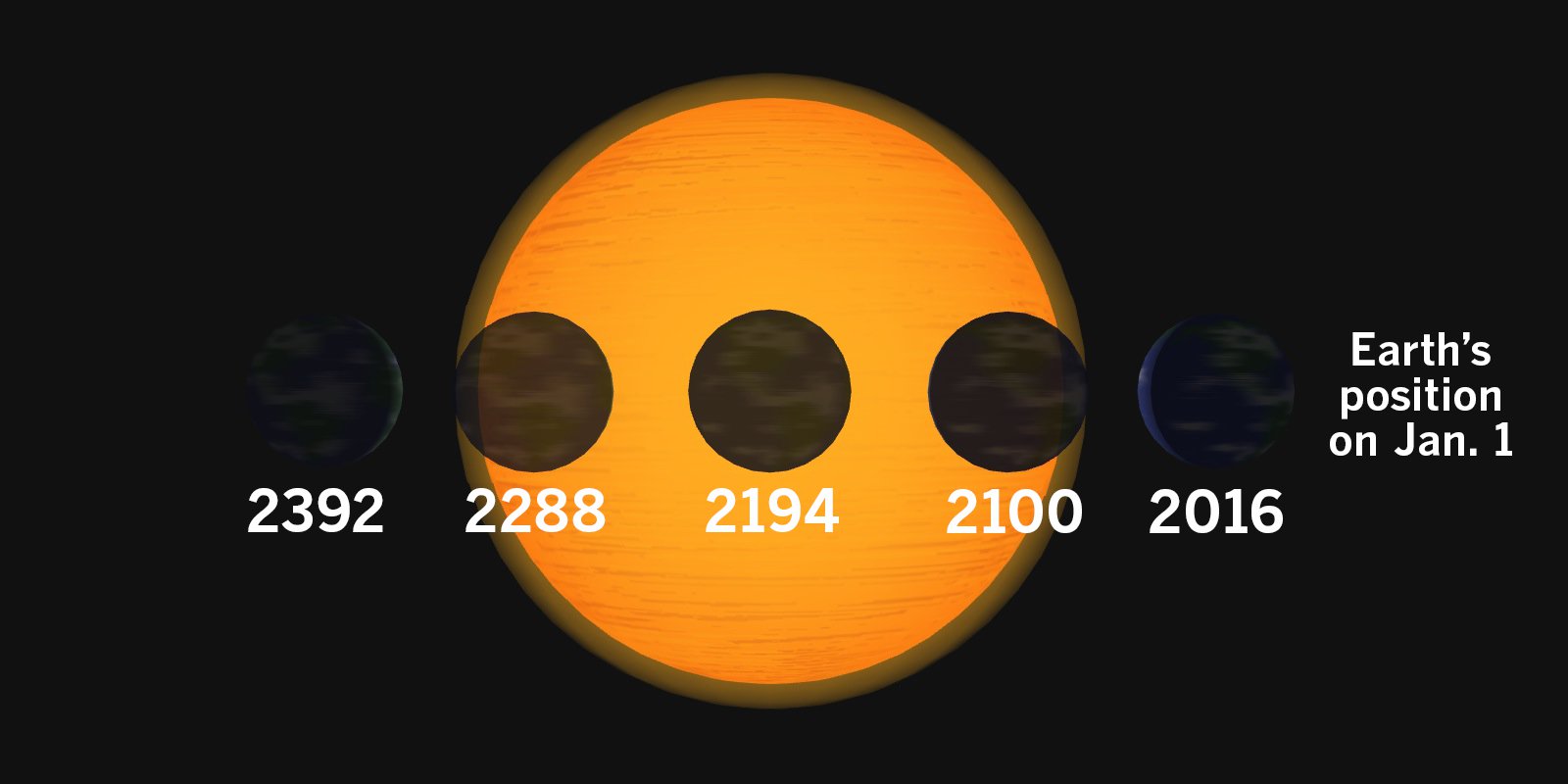What happens without leap years?
Not much, at least at first.
But little by little, the calendar year would get out of sync with the solar year. That’s because our calendar year usually lasts 365 days. But not exactly. It actually takes 365 days, 5 hours, 48 minutes and 45 seconds for Earth to complete its journey around the sun.
Every year, the calendar falls about one-quarter of a day behind the solar year. Over time, Jan. 1 would come earlier in winter, then in the fall. After about 780 years, New Year’s Day would coincide with the summer solstice.
If we never had leap years, today would be .*
This date is calculated by adding previous leap days to today’s date.
That assumes you start counting from the time of Julius Caesar and Cleopatra in 46 B.C. Through Cleopatra, Caesar met Egyptian astronomers on his trips to Alexandria. The Egyptians had figured out something the Romans missed: Days don’t fit neatly into a year.
There are about 365.2422 days each year. And that number is shrinking as tidal forces slow Earth’s orbit ever so slightly.
"The timepiece that we use, the Earth, is not as accurate as we need it to be in modern society," said David Ewing Duncan, author of the book “Calendar: Humanity's Epic Struggle to Determine a True and Accurate Year.”
"Natural objects have always been our timepiece, but we've always had to adjust," he said.
Hence the leap year and leap day on February 29th.
With Caesar’s new calendar, the Roman Empire would have three 365-day years followed by one with 366 days. This would “leap” the calendar forward, aligning it with the solar year before the two got too far out of whack.
Each year would be 365.25 days.
To get ready for the switch Caesar had to get the Roman calendar caught up. Until then, the Romans had been using a lunar calendar. So in 46 B.C., Caesar added 80 days to the calendar, in what became known as the “year of confusion.”
Unfortunately, Caesar’s plan to add a leap year every four years overshot the mark.
The difference between the extra .2422 of a day in the solar year and the extra .25 of a day in the calendar year amounted to 11 minutes and 14 seconds, according to Duncan.
It may not sound like much, but after four years the calendar was off by about 45 minutes. After about 125 years, the calendar was off by a day.
